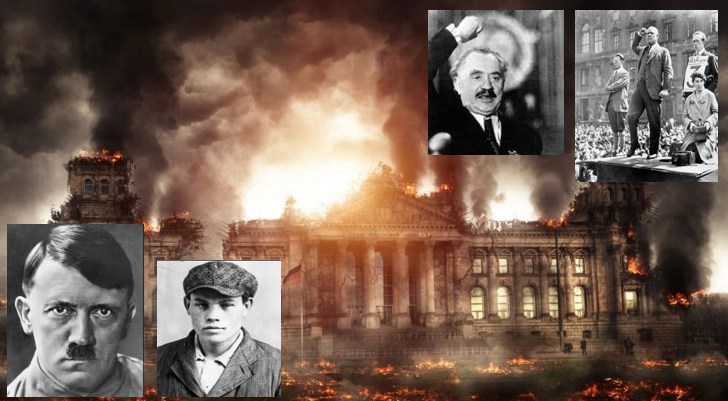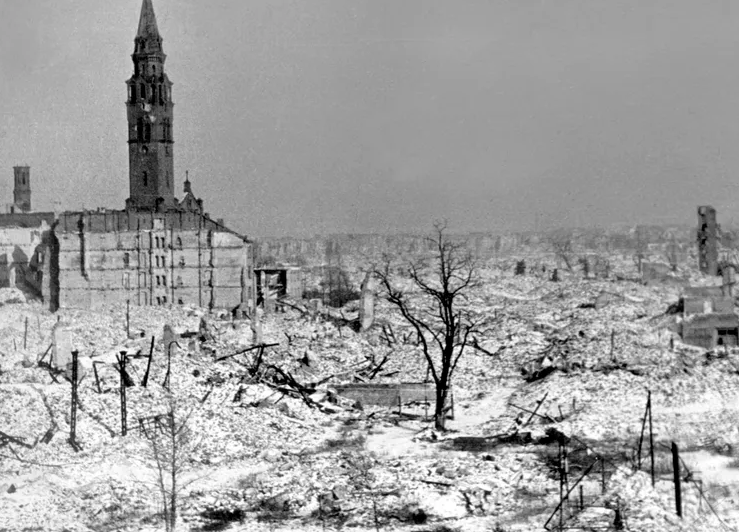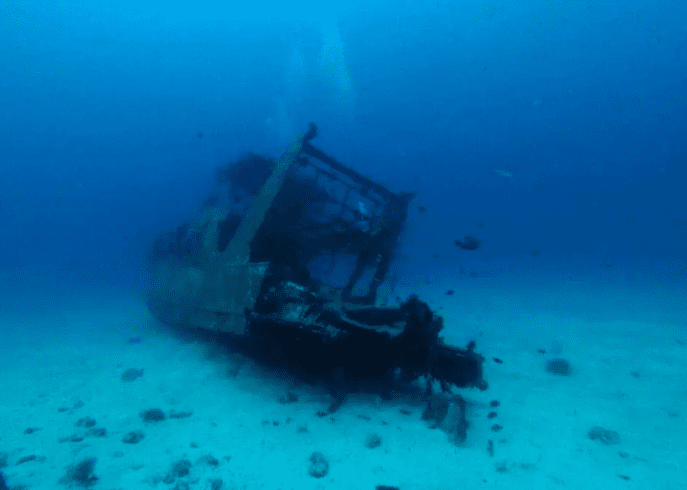The National Socialist German Workers’ Party (the Nazi Party for short), founded in 1919 in the atmosphere of moral and physical devastation caused by the World War, in which Germany and its allies suffered a heavy defeat, had only 12 seats in the 500-seat German parliament, the Reichstag, in May 1928. However, with the impact of the Great Depression of 1929, they triumphed with 107 seats in the federal elections in 1930. In the first round of the 1932 elections in March, which were accompanied by street fights and beer hall brawls resulting in deaths, Hitler received more than 11 million votes, but was still behind his rival General Hindenburg. In the runoff on April 10, Hitler won 13.5 million votes (36 percent), Hindenburg 19.4 million (53 percent), and Communist Party candidate Ernst Thälmann 3.7 million (10.2 percent). However, a government could not be formed and the country was governed by decree.
After Hitler was appointed German Chancellor by President Hindenburg on January 30, 1933, the popularity of his book Mein Kampf (written in prison in 1924) grew rapidly. Over 850,000 copies were sold that year alone. This not only made its author Hitler a millionaire, but in the public eye he was transformed from an ordinary soldier and politician into a revered and seemingly invincible leader.
The Nazis’ crazy plan
While the people were lulled to sleep with the lie that “democratic procedures were being carried out”, the opposition thought that Hitler could not take this process too far, and the trade unions and communists were preparing for strikes and street demonstrations. But the Nazis’ plan was insane. On 22 February 1933, Hitler used his powers as Chancellor to register up to 50,000 SA (Sturmabtellung) as auxiliary police, both to consolidate his fascist rule and to get rid of the revolutionary opposition. Two days later, Hermann Göring, Minister of the Interior and one of Hitler’s closest aides, ordered a raid on the Communist Party headquarters. After the raid, the Nazis supposedly claimed to have found evidence that the Communists were planning to attack public buildings. But for this propaganda to convince the masses, a provocative event was needed. And that was not long in coming.
Reichstag on fire!
At around 21.00 on the night of 27 February 1933, pedestrians near the Reichstag heard the sound of breaking glass. Soon the building was ablaze. It would take hours for the fire brigade to extinguish the fire, which destroyed the plenary hall and the gilded dome of the Reichstag. The police arrested an unemployed Dutch construction worker named Marinus van der Lubbe at the scene. The young man was found panting and sweating outside the building with a set of fire tools.
That evening, the leading figures of the Nazis were at a banquet at the home of Joseph Goebbels in Berlin. Among the guests was Adolf Hitler, who had just become Chancellor. During the dinner, a telephone call came to the house. The person on the phone was Ernst Hanfstaengl, a German-American press adviser known as Putzi. (According to Putzi’s wife Helen, Hitler, wounded in the failed Beer Hall Raid of 9 November 1923, which resulted in Hitler’s imprisonment, had taken refuge in Hanfstaengl’s house in Uffing, outside Munich. When the police came to arrest him, Hanfstaengl talked Hitler out of committing suicide. From then on he became Hitler’s confidant). “The Reichstag is on fire! The Reichstag is on fire!” The banquet was interrupted and fascist elders such as Hitler, Goebbels, Hermann Göring and Wilhelm Frick went to the scene of the fire and turned it into a rallying ground. Only that evening Hitler would identify the culprit: International communism had attacked German unity and solidarity with a cocktail organisation! “This is a sign from God!” Hitler told Franz von Papen (who was to be ambassador to Ankara between 1939 and 1944) when they arrived at the scene (or was it “a favour from God” as we say?). “If this fire is the work of the communists, which I am sure it is, then we must crush this deadly scourge with an iron fist.”
Terror begins
A few hours later, Hindenburg invoked Article 48 of the Constitution and the cabinet issued the “Decree of the Reich President on the Protection of the People and the State”. The decree abolished freedom of speech, assembly, privacy and the press, legalised wiretapping and interception of correspondence, and suspended the autonomy of federal states such as Bavaria. That night around 4,000 people were arrested, imprisoned and tortured by the SA. Most of the 81 communist deputies elected to the Reichstag in 1932 were detained indefinitely after the fire. Among them were Ernst Thälmann, Secretary General of the Communist Party, and Ernst Torgler, Chairman of the party’s Berlin parliamentary group. Then the Bulgarian communists Georgi Dimitrov and Blagoi Popov, Vassil Tanev, who had been living in Germany as political emigrants since 1923, were arrested.
Within two days all “traitors” were rounded up, and within a week or two concentration camps were set up in every town. All communists, leftists of all colours, liberals, intellectuals, dissidents, Jews who “did not conform to national customs and traditions” and Jews who were not killed in the first wave of purges, who were not “shot while fleeing” or who could not flee abroad were put in these camps. Most of them, who were defined as leaders, were killed in those camps with a bullet in the back of their necks or by severe torture.
Who is the perpetrator?
Marinus van der Lubbe, 24, was arrested as the perpetrator of the fire. According to the police, Marinus was a daring, enterprising young man who travelled in and out of Dutch communist circles. According to the police, Marinus had told them that he had carried out the arson attack alone. However, as it later turned out, Marinus neither knew the building nor had the ability to be in several places at the same time. Moreover, he did not live in Germany or Berlin, nor did he have any contact with anyone in Germany. Nor did he recognise the German and Bulgarian communists arrested that night.
According to the owner of the house where he lived in the Netherlands, Marinus told her that he had received a postcard from communist circles in Berlin. The card said that an illegal mission awaited him in Berlin. Marinus therefore arrived in Berlin on 18 February and decided to burn down the Reichstag for the communist struggle. Or so he was rumoured to have told the German police.
After peace and confidence had been restored, the Nazis held one last sham election on 5 March 1933, in which they won 43.9 per cent of the vote. Goebbels, the Minister of Propaganda, noted in his diary: “What do the numbers matter? We are now the masters of the state!” Indeed, on 1 April 1933, the Nazis began a boycott of Jewish-owned businesses. Immediately afterwards, a law preventing Jews from becoming civil servants was passed by parliament. In July 1933, parties other than the Nazi Party were dissolved.
Judgements
“After the land had been cleared”, the trials in connection with the fire began on 21 September 1933 in Leipzig. The accused were Marinus van der Lubbe, the German communist Ernst Torgler and the three Bulgarian communists Dimitrov, Popov and Tanev. Forbidden to speak to each other, the accused were locked in cells day and night with their hands chained. Tanev was so ill-treated that he attempted suicide.
The prosecution’s witnesses were a waiter and six thieves, rapists, morphine addicts and forgers. False evidence and perjured witnesses were fabricated, especially against Dimitrov, who even the prosecutor admitted was not in Berlin at the time of the incident. Göring and Goebbels, the most powerful men of the regime, would also come to the trials to testify against Dimitrov.
Marinus, who had previously been an energetic and outgoing young man, was like a walking funeral during the trials. Throughout the trial, Marinus was unable to answer questions with anything other than yes or no. This led to rumours that he had been poisoned, drugged or hypnotised, but the court refused to investigate these allegations.
Dimitrov, on the other hand, made a historic “defence”. Particularly when asked for his last words at the final hearing on 16 December 1933, Dimitrov’s speech was both an exposé of the fire provocation and a condemnation of fascism. Dimitrov’s demand was that they be released not only “for lack of evidence” but also and mainly “because as communists they could not have been involved in such acts”. The evidence was so bogus, the truth so obvious, that the tribunal could not sentence Dimitrov and his comrades, despite the clear manipulation of the Nazis. (Dimitrov’s Defence, published by Evrensel Publishing in 1994).
Only Marinus van der Lubbe was executed on 10 January 1934 for admitting to burning the Reichstag.
During the Nuremberg trials after the Second World War, General Franz Halder, one of Hitler’s opponents, testified that during Hitler’s birthday celebration in 1942, he had witnessed Hermann Göring saying “I am the only one who knows the truth about the Reichstag Fire because I set fire to the Reichstag”, but Göring denied this in his own defence.
Restitution of honour
Years later, Marinus’s brother Jan van der Lubbe appealed to the court for his brother’s retrial. In 1980 the Berlin Court recalled that all trials during the fascist period had already been ruled unlawful and also acquitted Marinus. The German Communist Party set up a committee to investigate the case and found that no one in the party had any connection with Marinus. In addition, the doctor’s report on Marinus’ mental capacity to commit the offence is still missing. There is no evidence other than his first statement that he started the fire.
And the parenthesis of “other history”: Marxist historian Eric Hobsbawm, in his book The Short 20th Century, 1914-1991 The Age of Extremes (contrary to its title, the 2006 edition published by Everest is 788 pages long), says: “Contemporary historiography does not support the claim that this was a Nazi provocation.” According to one allegation, a tunnel had already been dug to run heating pipes from the Chancellery, where Göring lived, to the Reichstag. Some SA men had met Marinus van Lubbe, a half-crazed Dutch communist with a penchant for arson, in a pub and had smuggled Lubbe in through the tunnel to burn bits and pieces. The fact that they had found a communist was an incredible stroke of luck for the Nazis, and they made the most of it.
To be honest, I cannot imagine Lubbe setting fires big enough to burn down the entire Reichstag, but it does not seem right not to take Hobsbawm seriously. However, no matter who started it, the Nazis “made good use” of this event. On 2 August 1934, when President General Hindenburg died, the terrible Nazi dictatorship began following the referendum on 19 August that gave Hitler extraordinary powers as “Führer”. The fascist terror, which was activated through the Reichstag Fire, led to the murder of tens of thousands of communists, especially Ernst Thälmann (arrested by the Gestapo in 1933 and shot dead on Hitler’s orders in 1944 after 11 years of solitary confinement in a concentration camp), and then, in accordance with the expansionist Lebensraum/Living Space concept formulated by Hitler, the Nazis ended the lives of 80 million people on their way to North Africa at one end and Moscow at the other.




